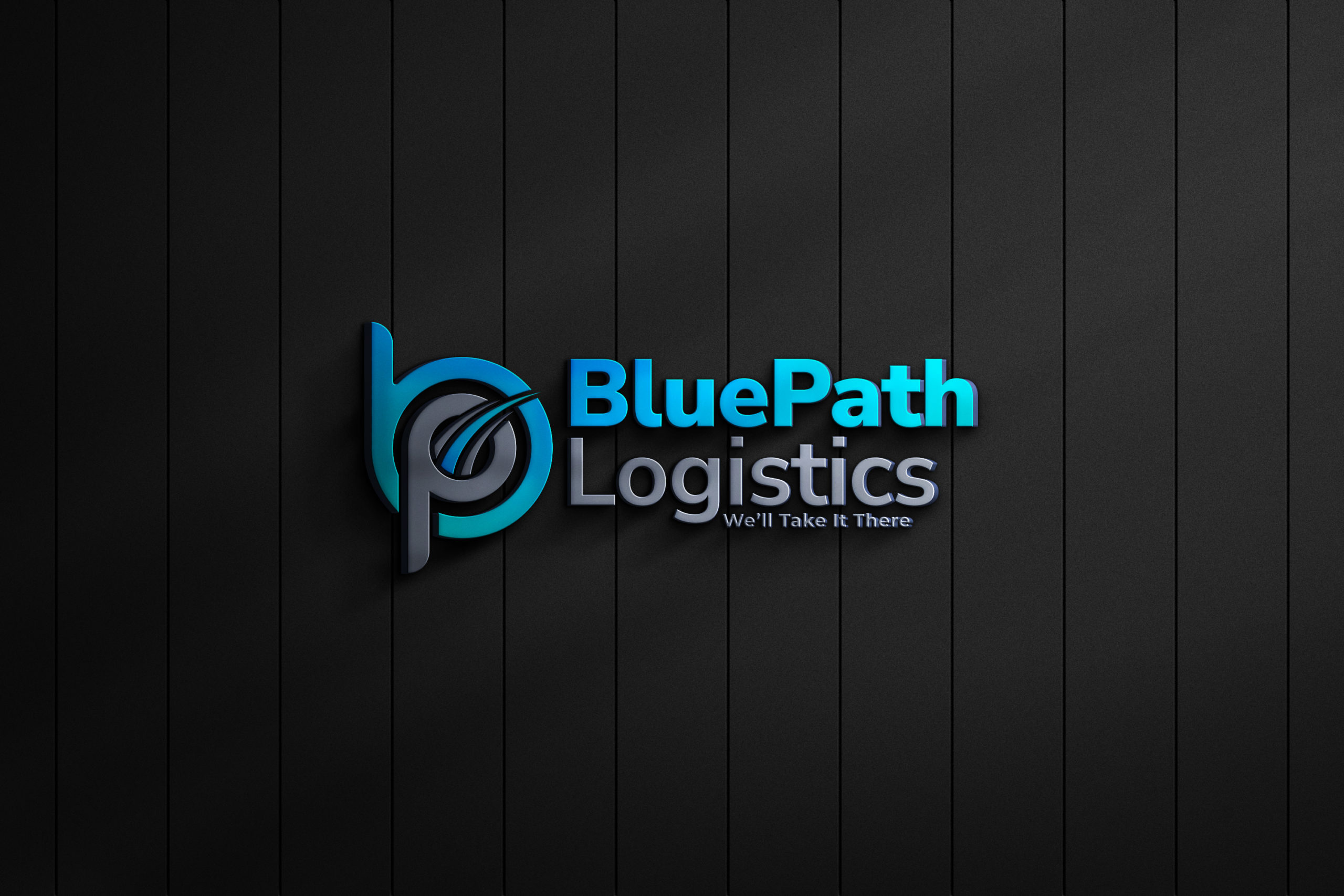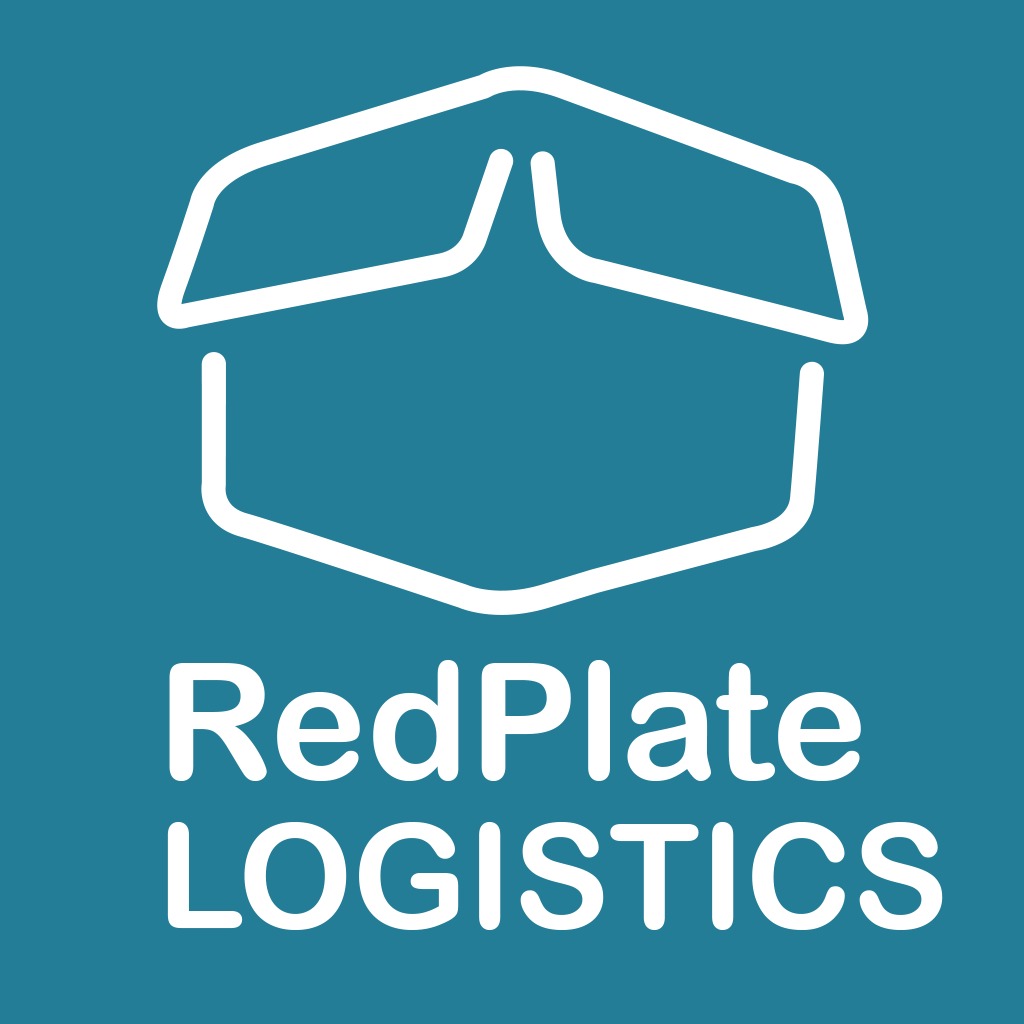Businessuite News24 International
Cisco Announces $25bn Stock Buyback Plan
Published
7 years agoon
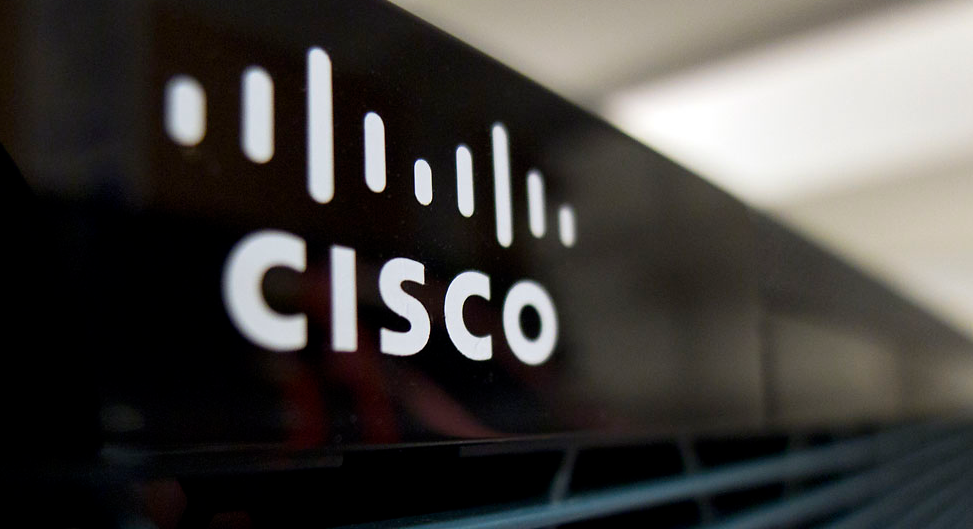
Cisco has become the first big tech company to pass the rewards of US tax reform directly to its investors, with the announcement of a $25bn stock buyback plan. The network equipment maker has $71bn of cash held offshore, amounting to the third largest pile of unrepatriated foreign earnings of any US company, after Apple and Microsoft.
You may like
-


Apple’s AI Play: A High-Stakes Game in a Booming Market
-


Businessuite International Tech Roundup
-


Earnings Reports From Tech Giants Tesla And Netflix Disappoint, And Other Tech Reports
-


What Does Fabius Maximus Have To Do With The Chatbot Battle Between Microsoft Corp. And Google?
-
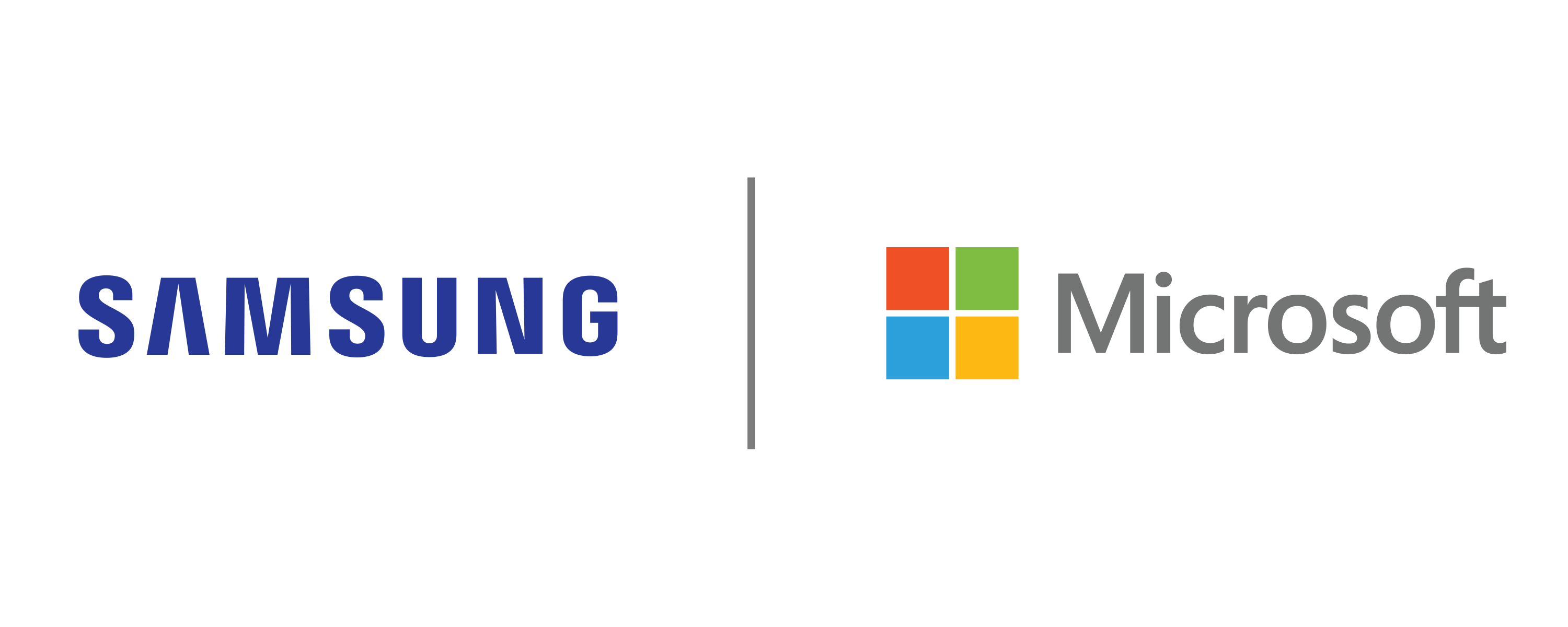

Samsung and Microsoft Expand Strategic Partnership to Deliver Unified Experiences Across Mobile Devices
-
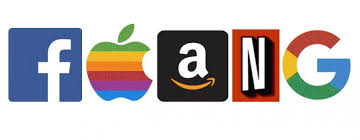

FAANG Group Post Mixed Earnings Reports
Businessuite News24 International
India’s 10-Minute Delivery Boom: Reshaping Retail, Logistics, and Urban Spaces
India is witnessing a rapid and transformative shift in its retail and logistics sectors through the rise of quick-commerce (q-commerce)—a model that promises to deliver goods within 10 minutes. At the center of this boom are companies like Blinkit (owned by Zomato), Swiggy Instamart, Zepto, and Flipkart Minutes, which are racing to meet the increasing demand for ultra-fast delivery, not just in metropolitan areas but also in tier-2 and tier-3 cities.
Published
3 weeks agoon
June 22, 2025
India is witnessing a rapid and transformative shift in its retail and logistics sectors through the rise of quick-commerce (q-commerce)—a model that promises to deliver goods within 10 minutes. At the center of this boom are companies like Blinkit (owned by Zomato), Swiggy Instamart, Zepto, and Flipkart Minutes, which are racing to meet the increasing demand for ultra-fast delivery, not just in metropolitan areas but also in tier-2 and tier-3 cities.
The Emergence of the 10-Minute Promise
Initially focused on groceries, q-commerce platforms are expanding into electronics, fashion, household goods, and even pharmaceuticals. This evolution is driven by several converging factors:
-
Consumer lifestyle changes, especially post-pandemic, have increased the demand for convenience and instant gratification.
-
Smartphone penetration and digital payments have made ordering easier and faster.
-
Fierce competition and significant investor backing have accelerated innovation and service expansion.
-
Changing consumer behavior, particularly among Gen Z, favors frequent, smaller transactions over traditional bulk shopping.
What started as an experiment in convenience has quickly become a default expectation in many urban centers.
Hyperlocal Warehousing: The Backbone of Q-Commerce
To fulfill the 10-minute delivery promise, companies are building a decentralized web of micro-fulfillment centers, also known as “dark stores.” These small, strategically located warehouses serve a 2–3 km radius and are optimized for speed and efficiency.
-
Speed and proximity are the game-changers. By stocking inventory close to consumers, platforms cut delivery times dramatically.
-
AI and predictive analytics ensure these hubs are stocked with high-demand items, reducing waste and improving inventory turnover.
-
Optimized delivery routes and short travel distances reduce fuel consumption and cut costs.
-
Operational flexibility is key—these dark stores, often located in underutilized urban spaces, are agile and scalable.
This model is not just transforming mega-cities. Tier-2 and tier-3 cities like Lucknow, Indore, and Coimbatore are emerging as new logistics hubs, offering lower operational costs, available workforce, and growing consumer bases. The trend is also driving demand for Grade A warehousing infrastructure, with automation and tech-readiness becoming standard.
Economic Opportunity Meets Ethical Dilemmas
While the 10-minute model offers enormous economic potential, it comes with a growing list of concerns:
-
Worker welfare is under scrutiny. Riders often face unsafe conditions, intense delivery pressure, and unrealistic performance expectations.
-
Profitability remains elusive, especially in non-metro areas where lower order values may not justify the cost of hyperlocal fulfillment.
-
Health and consumption patterns may be affected as frequent, impulsive purchases could lead to unhealthy food choices and increased consumerism.
-
Urban congestion is escalating, with a surge in delivery vehicles clogging roads and increasing the risk of accidents.
-
Regulatory uncertainties, particularly around land use and licensing for dark stores, pose ongoing challenges for expansion.
The Road Ahead: Tech-Driven, Consumer-Focused, and Regulation-Watched
The future of India’s quick-commerce ecosystem will depend on balancing technological advancement, consumer convenience, operational efficiency, and social responsibility. Innovations in last-mile delivery automation, predictive inventory systems, and rider safety tech are being explored as solutions.
Moreover, as the model spreads to smaller cities, the hyperlocal warehousing surge will likely create new job opportunities and stimulate local economies—if managed sustainably.
Conclusion
India’s 10-minute delivery boom is more than just a race to deliver faster—it’s a redefinition of urban retail and logistics. It exemplifies how digital infrastructure, urban planning, and evolving consumer behaviors are reshaping the modern commerce landscape. The path forward must balance speed with sustainability, profit with worker safety, and innovation with inclusivity to ensure long-term growth and societal benefit.
Businessuite News24 International
Uber Introduces Route Share: A New Chapter in Affordable, Shared Mobility
Early reactions to Route Share have been mixed. Some passengers appreciate the cost savings and the opportunity to contribute to environmental efforts. However, drivers have expressed concerns about the potential for increased complexity and reduced earnings associated with shared rides. Past experiences with similar services, like Uber Pool, have left some drivers wary of the challenges posed by coordinating multiple pickups and drop-offs.
Published
2 months agoon
May 15, 2025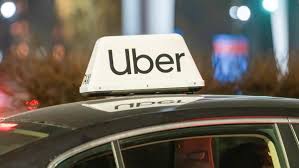
In a strategic move to enhance affordability and sustainability, Uber has unveiled “Route Share,” its latest shared ride option. Launched during the company’s annual “Go-Get” event in New York, Route Share is currently available on busy weekday routes in cities like New York, San Francisco, and Chicago, with plans to expand to additional markets.
Key Features of Route Share:
Fixed Routes: Route Share operates on specific, high-demand corridors during weekday morning and evening rush hours (6-10 a.m. and 4-8 p.m.).
Scheduled Pickups: Pickups occur every 20 minutes, making it predictable for commuters.
Shared Rides: Riders share a vehicle with up to two other passengers, reducing costs.
Affordable Pricing: Fares are designed to be up to 50% cheaper than UberX.
Convenient Booking: Riders can book a seat up to seven days in advance or as little as 10 minutes before departure.
Initial Availability: Route Share is initially available in several major US cities, including New York City, Chicago, San Francisco, Boston, Los Angeles, and Washington, D.C.
Understanding Route Share
Route Share is designed to provide Uber’s most budget-friendly ride option by allowing passengers traveling in similar directions to share a ride. This service aims to reduce costs for riders while promoting efficient vehicle usage and lowering emissions. Unlike its predecessor, Uber Pool, Route Share focuses on streamlining the shared ride experience by limiting the number of co-riders and optimizing routes to minimize detours.
Rationale Behind the Launch
The introduction of Route Share aligns with Uber’s broader strategy to cater to price-sensitive consumers amid economic uncertainties. By offering more affordable transportation options, Uber aims to maintain and grow its user base. Additionally, Route Share supports Uber’s commitment to sustainability by encouraging shared rides, which can lead to fewer vehicles on the road and reduced carbon emissions.
Initial Market Feedback
Early reactions to Route Share have been mixed. Some passengers appreciate the cost savings and the opportunity to contribute to environmental efforts. However, drivers have expressed concerns about the potential for increased complexity and reduced earnings associated with shared rides. Past experiences with similar services, like Uber Pool, have left some drivers wary of the challenges posed by coordinating multiple pickups and drop-offs.
Comparison with UberX Share and Competitor Services
 Route Share is part of Uber’s suite of shared ride options, which includes UberX Share. While both services aim to offer affordable rides through carpooling, Route Share is specifically tailored for high-demand routes during peak weekday hours. In contrast, UberX Share is available more broadly and allows for dynamic matching of riders throughout the day.
Route Share is part of Uber’s suite of shared ride options, which includes UberX Share. While both services aim to offer affordable rides through carpooling, Route Share is specifically tailored for high-demand routes during peak weekday hours. In contrast, UberX Share is available more broadly and allows for dynamic matching of riders throughout the day.
Lyft, Uber’s primary competitor, has had a varied approach to shared rides. The company previously offered Lyft Line and later Lyft Shared, but these services have seen fluctuations in availability and popularity. Lyft has faced challenges in maintaining consistent shared ride offerings, partly due to driver dissatisfaction and operational complexities.
Looking Ahead
Uber’s launch of Route Share represents a renewed commitment to shared mobility solutions that balance affordability, efficiency, and sustainability. As the company gathers more data and feedback from both riders and drivers, adjustments to the service are likely to ensure it meets the needs of all stakeholders. The success of Route Share will depend on Uber’s ability to address the logistical challenges of shared rides while delivering a positive experience for users.
For riders seeking cost-effective transportation options and willing to share their journey with others, Route Share offers a promising alternative. As urban areas continue to grapple with traffic congestion and environmental concerns, services like Route Share could play a pivotal role in shaping the future of urban mobility.
Businessuite News24 International
Special Report – Expanding Horizons: How Mergers And Acquisitions Is Driving Caribbean Companies’ Global Growth
Published
6 months agoon
January 26, 2025
The Caribbean business landscape has seen a growing trend of mergers and acquisitions (M&A) as a vehicle for regional companies seeking growth beyond their domestic markets. An increasing number of Caribbean firms recognize the potential of M&A to build scale, expand geographic reach, and tap into international markets. For many of these companies, the relatively small size of the Caribbean economy poses limitations on growth, making M&A a strategic solution to secure larger market shares, diversify revenue sources, and compete globally.
A notable example is Republic Bank, which has extended its reach through acquisitions such as the Bank of Banco Mercantil in the Dominican Republic and Caribbean Commercial Bank in Barbados. These moves have enabled Republic Bank to build a diversified portfolio across the Caribbean and Latin America, positioning itself as a leading financial entity in the region. Similarly, Massy Group, with its broad-based operations, has pursued investments in sectors like automotive in Colombia, marking its commitment to establishing a stronghold in Latin American markets and reinforcing its position in Central and South America.
The adoption of M&A by Caribbean businesses highlights the shift in regional corporate strategy. Traditionally, companies like GraceKennedy, NCB Financial, and Sagicor Financial focused on consolidating their domestic operations. Now, these entities are prioritizing cross-border growth through acquisitions that can enhance their market positions, provide new revenue streams, and strengthen operational capabilities. For instance, Sagicor’s acquisition of ScotiaLife Trinidad & Tobago allowed it to expand its life insurance and financial services offerings, while NCB Financial’s acquisition of Clarien Group in Bermuda extended its presence into North America.
While M&A holds substantial promise for Caribbean firms, it also brings challenges. Integration risks, cultural alignment, and the complexity of managing multinational operations are common hurdles that require careful planning and execution. Companies must focus on strategic fit and synergy to ensure these mergers generate long-term value. Successful M&A deals, as seen with Republic Bank and Massy, illustrate that the right acquisitions can propel Caribbean firms beyond regional limitations and onto the international stage.
Mergers and acquisitions are not merely growth strategies but represent a transformative approach for Caribbean companies striving to establish themselves in the global economy. By pursuing strategic acquisitions, Caribbean businesses can overcome the constraints of small domestic markets, improve scalability, and compete on an international level.
However, achieving success in M&A demands more than financial investment; it requires thorough integration planning and alignment with the overarching strategic goals of each company. As more Caribbean firms embrace M&A, they are setting the stage for a bolder, globally competitive Caribbean business ecosystem, poised to navigate the demands and opportunities of a dynamic global market.

CIBC FirstCaribbean Grenada Business Acquisition
On July 14th, 2023, Grenada Co-operative Bank Ltd. acquired certain assets and deposit liabilities of CIBC FirstCaribbean Grenada business. This saw substantial growth with the addition of approximately $360 million in total assets.
The loan portfolio acquired was $154 million and $398 million in deposit liabilities. Of note, the acquired facilities contributed only marginally to the Bank’s overall financial performance for the year ended September 30th, 2023.
As a safeguard, the Bank strategically pursued $50million of additional capital in the form of subordinated debt which buttressed its Tier II buffer, strengthening its overall capital position.
This acquisition is a significant development in the evolution of the banking system of Grenada, Carriacou and Petite Martinique. The Bank acquired a lean book of business that bolts on well to its current business model with the intent of providing sought-after profitability, increased market share, and company momentum in a sustainable, long-term way. This all redounds to the achievement of the Bank’s mission of ensuring a fair return to shareholders and contributing to the well-being of the citizens where we operate.
Darryl Brathwaite Acc. Dir Chairman Grenada Co-operative Bank Ltd.
 Massy Strategy, Growth and Global Expansion Update
Massy Strategy, Growth and Global Expansion Update
The Group’s Corporate Strategy remains consistent and follows
from the new vision statement with three simple components:
• Growth and Global Expansion
• Capital Management to Increase Value for Stakeholders
• Operating with a Caribbean Heart
In FY2023, we successfully closed three significant acquisitions:
Rowe’s IGA supermarkets in Jacksonville, Florida (US$47 million), Air Liquide operations in Trinidad ($51.5 million with a deferred consideration) and IGL Jamaica (US$142 million).
1 Rowe’s IGA Supermarkets: independent supermarket chain of 7 stores in Jacksonville, Florida USA; Rowe’s IGA acquisition closed on December 12th and is a major step in achieving the Group’s global vision as it provides an excellent beachhead for further niche supermarket acquisitions in the United States, while providing strength in hard currency cash generation.
2 Air Liquide Trinidad & Tobago Ltd: a manufacturer and supplier of industrial and medical gases in Trinidad & Tobago; In January, the Group acquired Air Liquide’s operations in
Trinidad solidifying the Group’s position as the leading industrial gas manufacturer and distributor in the region and generating additional export opportunities.
3 IGL (St. Lucia) Limited: the parent company of a distributor of LPG, and manufacturer and distributor of industrial and medical gases in Jamaica. The IGL Jamaica acquisition closed in May 2023, and this consolidated the Group’s position as the leading LPG business in the region and will also provide access to additional economies of scale to bring efficiencies to consumers.
The Group deployed over US$240.5 million in capital to consummate these transactions and during the fiscal year. An additional TT$1.1 billion (US$158 million) in Revenue and TT$142 million (US$21 million) in PBT were derived specifically from the three deals in aggregate. We are actively engaged in efforts to integrate the companies within the Massy Group. These integration efforts are not only focused on capturing the desired synergies for enhanced financial performance, but also on ensuring cultural integration and alignment with our core values for wider stakeholder value creation.
Mr. Gervase Warner President & Group CEO
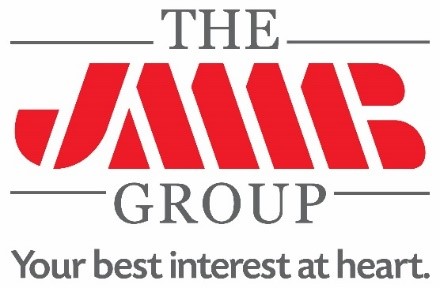 JMMB Group Strategic Investment In Sagicor Financial Corporation
JMMB Group Strategic Investment In Sagicor Financial Corporation
In 2019, the JMMB Group strategically invested in SFC to further diversify its business model and revenue streams. Currently, the Group holds a 23.62% stake in SFC, making it the Company’s single largest shareholder. SFC provides the Group with country and business line diversification, operating in 21 countries and as a major player predominantly within the Insurance industry. This was particularly beneficial to the Group in the adverse operating environment, which negatively impacted the investment business of financial services in the region.
The JMMB Group’s investment in SFC contributed J$20.3B in Share of profit of associate, which was significantly driven by one-off gains on its acquisition of the ivari Insurance Company in Canada. The US$250M or 22.52% acquisition of SFC in 2019 has proven to be a good diversification investment that continues to provide solid returns for the JMMB Group.
However, the total contribution from business lines and share of profit from SFC were tempered by prudent loan loss provisioning of J$12.6B for a startup greenfield operation in the Energy sector, which was rated Investment grade by CariCRIS and, as such, was an allowable asset which received wide support from the financial sector in the region.
Mr. Ellis reported that JMMB Group’s US$250M investment in SFC represented 23.32% stake in the Associate Company and was currently valued at J$40.4B.
SFC’s contribution to profit for the year amounted to J$2.7B. This contribution to net profit during a challenging period further validated the strategic importance of this investment and the benefits to be derived from the Group’s Revenue Diversification Strategy. The Group received consistent flows of dividends from the SFC which for the year ended March 31, 2023 totalled J$1.1B. SFC’s continued push to strengthen its financial position and create growth opportunities augured well for the Company and by extension the JMMB Group. Mr. Ellis highlighted that the JMMB Group continued to be excited about its investment in SFC. SFC continues to implement its strategic initiatives and recently announced a potential acquisition of Ivari in Canada. The transaction was in closure phase and management expects very positive results for the JMMB Group.
Keith Duncan CD Group Chief Executive Officer JMMB Group of Companies
 Wigton Diversification, Investment Joint Ventures, and Investment In Associates
Wigton Diversification, Investment Joint Ventures, and Investment In Associates
Wigton has positioned itself well for success and resilience. The Company is committed to building a sustainable energy future through its strategy of investing in green energy and clean technologies locally and regionally.
During the year the Company continued its foray into green energy and clean technology diversification through its investments in associates and joint ventures, and also participated in the tender issued by the Generation Procurement Entity in September 2023 by submitting a 49.83 MW solar technology bid.
On April 5, 2022 the Company and Innovative Energy Company DBA IEC SPEI Limited, entered into two (2) joint venture agreements, one specifically in respect of the Norman Manley International Airport Solar project which was successfully completed and commissioned on May 31, 2022 and the other generally for the design, installation, operation and maintenance of green energy solutions.
The latter joint venture was registered as the Wigton-IEC Joint Venture (“JV”) under and in accordance with the Registration of Business Names Act. The JV has to date successfully bid on the design, supply and installation of distributive solar photovoltaic systems at certain Essex Valley Agricultural Development Project locations in St. Elizabeth/Manchester, Jamaica which design, supply and installation is scheduled to be completed in the second quarter of the financial year ending March 31, 2025 and commissioning at a later date pending readiness for same. The JV was also successful in its bid for the design, supply, installation and commissioning of solar photovoltaic systems at the Sangster International Airport, Montego Bay, Jamaica and which project is now being executed.
In March 2022 Wigton acquired 21% of the shareholdings of Flash Holdings Limited, a St. Lucian company which is the sole shareholder of Flash Motors Company Limited (“FMCL”), a Jamaican company, that distributes electric vehicles and electric vehicle charging infrastructure.
During the year FMCL took active steps to acquire an electric vehicle distributorship. This culminated in successful negotiations with the Geely Holdings Group in relation to their Zeekr and Riddara brand of electric vehicles and the company acquiring an initial order of twentysix (26) Riddara electric vehicles which will be sold regionally.
Dennis Chung Chairman
 ANSA Mc Al Mergers, Acquisitions And Strategic Partnerships Remain Key Aspect Of Group’s Growth Strategy.
ANSA Mc Al Mergers, Acquisitions And Strategic Partnerships Remain Key Aspect Of Group’s Growth Strategy.
Our recent acquisition, COLFIRE, has already made noticeable contributions to the Group’s
performance, laying the foundation for growth and innovation in the Insurance sector. During the year, the Group also secured a minority interest in the Bahamian Brewery and Beverage Company Limited and entered into contract brewing arrangements with local partners in Canada and Greece. In Guyana, ANSA Motors introduced Hyundai construction equipment to support that country’s booming building sector. We also introduced our paint brands, Penta, Sissons and Berger, as well as our concrete and clay blocks, with the launch of our ANSA Building Solutions business.
Looking ahead, we believe our Group’s value proposition, talented employees, good governance practices and strong balance sheet will serve us well in navigating any challenges which may arise. We are focused on strengthening and boosting the value of our existing operations while exploring strategic business opportunities. I am pleased to announce that in April 2024, we entered into a joint venture agreement with Globus Spirits Limited, a leading player in the Indian alcoholic beverage industry. The new joint venture company will engage in manufacturing, sourcing and distribution of beer in India, with an initial focus on introducing our flagship brand, Carib, to the Indian market. We believe that the company will play a pivotal role in meeting consumer demand and driving growth in the beverage sector in India.
A. Norman Sabga LLD (Hon.) UWI; (H.C.) UTT Executive Chairman ANSA Mc Al Limited (Group)
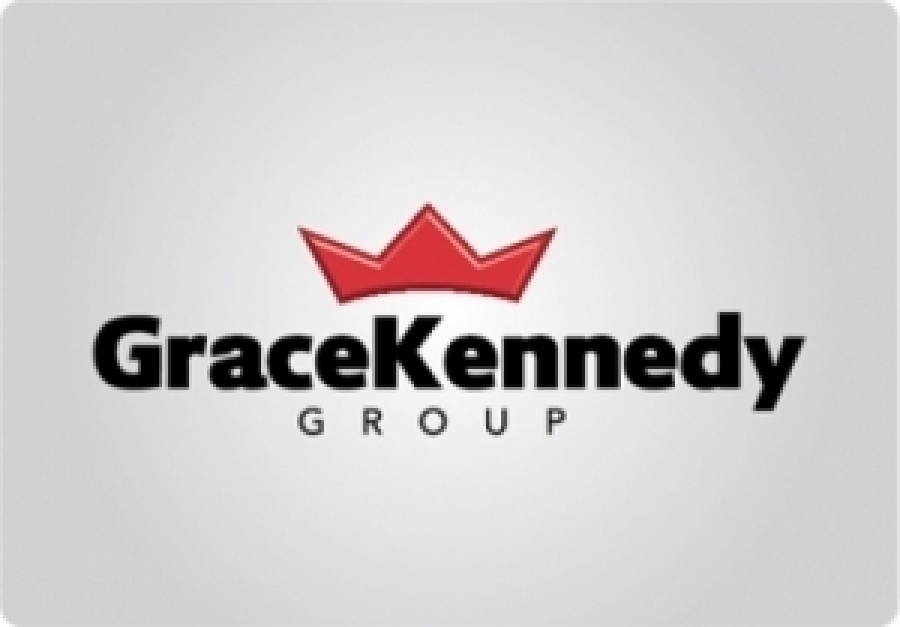 GraceKennedy Pursuing Strong Partnerships And Strategic Acquisitions Are Key To Realising Our 2030 Vision.
GraceKennedy Pursuing Strong Partnerships And Strategic Acquisitions Are Key To Realising Our 2030 Vision.
In 2023, we executed on several initiatives in keeping with this long-term goal. M&A continued to play an integral role in our growth strategy.
Our acquisition of Scotia Insurance Caribbean Limited (SICL), subsequently renamed GK Life Insurance Caribbean Limited, was completed in March. In addition to the seven Caribbean markets GK Life Insurance Eastern Caribbean Limited already served (Anguilla, Antigua and Barbuda, Dominica, Grenada, St. Kitts and Nevis, St. Lucia, and St. Vincent and the Grenadines), GK Life Insurance Caribbean Limited now offers credit protection insurance in the five territories where SICL operated (Barbados, Belize, the British Virgin Islands, the Cayman Islands, and the Turks & Caicos Islands). Both companies operate under the GK Life Insurance brand. In 2023, GK Life Insurance Eastern Caribbean Limited
also received regulatory approval to begin operating in St. Maarten, which will add a thirteenth market to its business.
In February 2023, we increased our ownership in Catherine’s Peak Bottling Company Limited from 35% to 70%. Catherine’s Peak Bottling Company Limited, the owner of the Catherine’s Peak pure spring water brand, is now a subsidiary of our Group. Additionally, in October, we acquired Unibev Limited, a manufacturing company specialising in fully integrated beverage production.
These acquisitions solidify GK’s position in Jamaica’s spring water market while vertically integrating our spring water operations. In alignment with our Jamaican food business’s growth strategy to acquire strong consumer brands with local and international potential, the acquisitions also further our plan to position GK as a regional leader in food and beverage manufacturing.
Don Wehby, OJ Group CEO, GraceKennedy Limited
Businessuite News24 International
FedEx’s Bold Move To Spin-off Freight Division Signals Strategic Shift in Logistics
Published
7 months agoon
December 20, 2024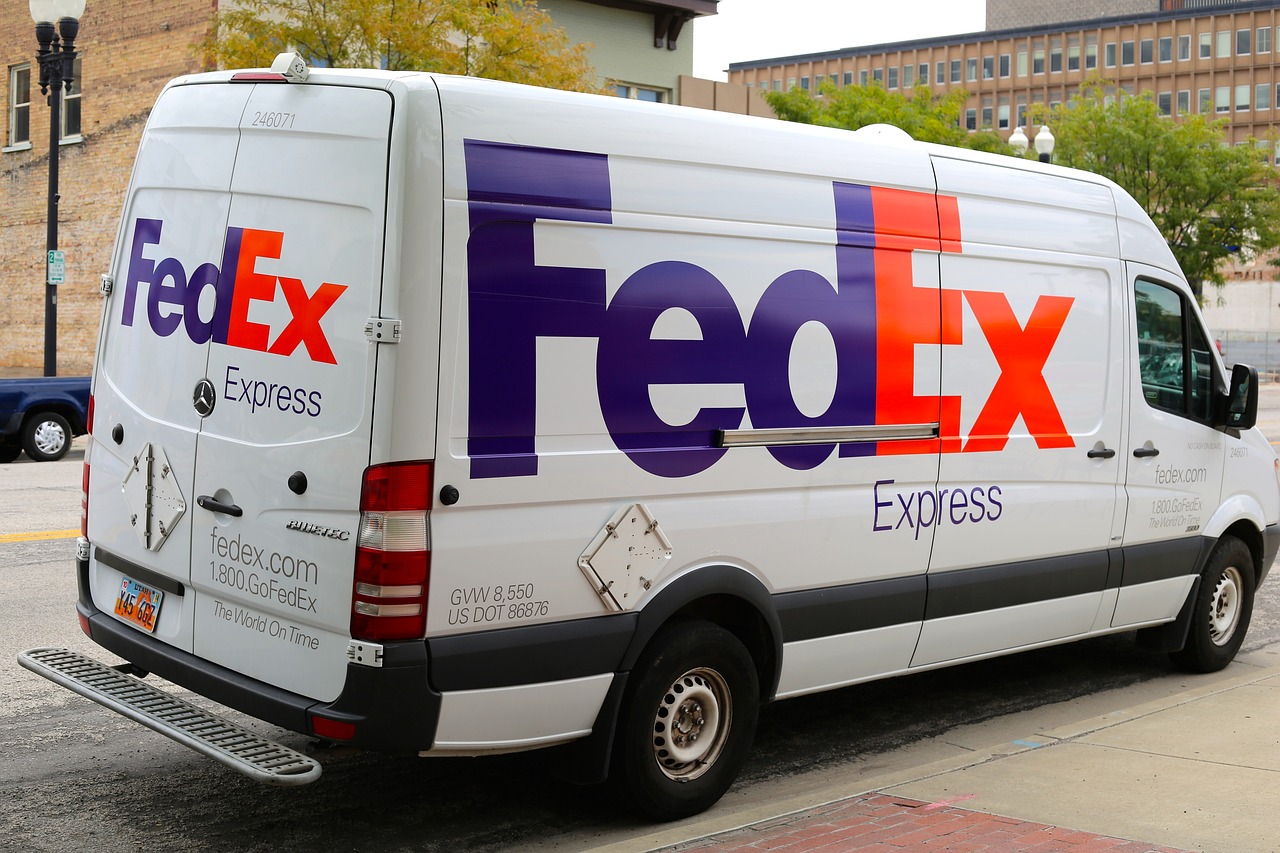
“FedEx shares are jumping 8.6% in premarket trading after the company said it plans to spin off its freight division into a separate publicly traded company in a deal that will streamline the parcel giant.” Bloomberg.com
FedEx shares surged 8.6% in premarket trading following the company’s announcement that it would spin off its freight division into a separate publicly traded entity. This ground-breaking decision marks a major shift in FedEx’s strategy as it seeks to streamline its operations and sharpen its focus on parcel delivery services, while allowing the new freight entity to pursue its own growth path.
As the logistics industry continues to evolve amid growing competition from e-commerce giants and global supply chain disruptions, FedEx’s move reflects a broader trend of corporate restructuring aimed at unlocking value for shareholders and enhancing operational efficiencies.
FedEx: A Legacy of Innovation and Growth
Founded in 1971 by Frederick W. Smith, FedEx revolutionized the logistics industry with its pioneering overnight delivery service. Over the decades, the company expanded its portfolio through a series of acquisitions, including the purchase of American Freightways in 1998, which became FedEx Freight, and the integration of TNT Express in 2016, helping the company solidify its international footprint.
Today, FedEx is a global logistics behemoth, offering a wide range of services spanning express parcel delivery, freight services, and e-commerce solutions, with annual revenues surpassing $90 billion.
Despite its success, FedEx has faced mounting pressure in recent years from increased competition, rising fuel costs, and changing customer expectations. The COVID-19 pandemic only accelerated these challenges, highlighting the growing importance of e-commerce and fast delivery services, as well as the need for enhanced operational agility. In response, FedEx has been focusing on restructuring its business model, optimizing its supply chain, and embracing new technologies to stay ahead of the curve.
The decision to spin off its freight division marks the latest chapter in this ongoing evolution.
The Spin-Off: A Strategic Move to Streamline and Enhance Focus
The decision to separate FedEx’s freight division is a strategic one aimed at unlocking value for both the parent company and the new spinoff entity. FedEx’s freight business, which includes ground and less-than-truckload (LTL) services, has been a significant contributor to the company’s overall revenue. However, the division has faced operational challenges, including rising labour costs and supply chain inefficiencies, which have sometimes resulted in underperformance relative to the company’s express parcel services.
By creating a standalone, publicly traded company, FedEx aims to achieve several key benefits:
- Unlocking Value for Shareholders: The spin-off allows the freight division to operate independently, enabling it to pursue its own growth strategy and unlock shareholder value. For investors, this creates a more straightforward opportunity to invest in the segment they find most appealing, whether that be parcel services or freight logistics.
- Greater Operational Focus: FedEx has long been a diversified logistics company, but separating the freight business from its parcel division will allow both entities to concentrate on their core operations. The parcel division can continue its focus on global e-commerce growth, while the freight business can double down on industrial and B2B logistics.
- Increased Flexibility: A separate freight company can more effectively tailor its offerings to meet the needs of its specific customer base. This could include expanding its LTL network, improving last-mile delivery, or exploring new technologies such as autonomous trucks and electrification.
- Boosting Shareholder Confidence: Investors have often expressed concerns about the complexity of FedEx’s sprawling operations. A clear separation of its various business units should make the company’s financials easier to analyze, thereby boosting investor confidence and potentially driving up stock prices.
The Future of the Freight Division: Competing in an Evolving Market
While the new freight division will be operating independently, it will retain many of the key advantages that made it an integral part of FedEx’s global supply chain. The freight industry, particularly LTL logistics, continues to grow as e-commerce drives demand for more flexible and efficient shipping solutions. The spin-off gives the new company a stronger platform to compete in this dynamic environment.
- LTL and Freight Services: The U.S. freight industry, valued at over $1 trillion annually, is undergoing significant transformation as companies invest in better technology, more efficient distribution systems, and sustainability. The freight spinoff could focus on expanding its LTL capabilities, which have proven to be a growing market segment in recent years. Innovations in digital freight matching and automated supply chains will allow the new entity to compete more effectively with companies like XPO Logistics and J.B. Hunt.
- Autonomous and Electric Trucks: As the logistics industry increasingly looks toward electrification and automation, the freight division could capitalize on emerging technologies such as autonomous trucks and electric delivery vehicles. Companies like TuSimple and Embark Trucks are leading the charge in autonomous freight, while firms like Tesla are pushing forward with electric truck prototypes. FedEx Freight could become a key player in this space by integrating these technologies into its operations, helping it maintain a competitive edge.
- Last-Mile Logistics and Supply Chain Optimization: With the growth of e-commerce, last-mile logistics has become a critical battleground in the freight industry. The new company could focus on streamlining last-mile delivery, offering faster and more cost-efficient services, while leveraging FedEx’s global network for greater reach.
Strategic Responses from UPS, Amazon, and Other Competitors
The spin-off of FedEx’s freight division will undoubtedly stir competitive responses from rivals, including UPS, Amazon, and other key players in the logistics and transportation industry. Each of these companies has been heavily investing in its own logistics infrastructure, and the separation of FedEx’s freight business will present both challenges and opportunities.

- UPS: As FedEx’s largest competitor in the parcel and freight space, UPS will likely see the spin-off as an opportunity to consolidate its own position in the market. UPS has been aggressively expanding its ground operations and focusing on automation, but it will need to accelerate efforts in areas like LTL shipping and cross-border logistics to stay competitive with FedEx Freight.
- Amazon: The e-commerce giant continues to disrupt traditional logistics players with its vast delivery network and technology-driven approach. With Amazon’s growing focus on logistics and its own freight delivery capabilities, the spin-off could signal an opportunity for Amazon to capitalize on any potential operational weaknesses in the separated FedEx freight business. Amazon is also investing heavily in its own fleet of delivery trucks and drones, and any strategic moves by FedEx Freight will need to account for Amazon’s growing presence in the sector.
- Other Competitors: Companies like XPO Logistics, J.B. Hunt, and DHL will likely view the spin-off as an opportunity to gain market share. These companies have already been investing in automation, digitization, and sustainability initiatives, and they will likely use the split to adjust their own strategies, offering more competitive solutions for customers.
Conclusion: A Pivotal Moment for FedEx and the Freight Industry
The spin-off of FedEx’s freight division is a pivotal moment for the company and the logistics industry at large. While it poses challenges to competitors, it also presents FedEx with an opportunity to streamline its operations, unlock shareholder value, and enhance its focus on e-commerce growth. For the newly created freight entity, the future is filled with opportunities to innovate and compete in an increasingly tech-driven industry.
As the logistics sector continues to evolve, FedEx’s decision to separate its freight business marks an important strategic shift—one that could have far-reaching implications for the industry and for how logistics giants like UPS, Amazon, and others respond in the future.
Auto
Honda + Nissan Is A Merger That Could Reshape the Japanese Auto Industry and Challenge Toyota
The catalyst behind this potential merger is the urgent need for both Honda and Nissan to strengthen their positions in a marketplace undergoing radical transformations.
Published
7 months agoon
December 18, 2024
In a move that could reshape the global automotive landscape, Japan’s Honda and Nissan are reportedly preparing to start negotiations for a potential merger. If successful, this deal would create an automotive giant capable of rivaling Toyota, long considered the dominant player in Japan’s automotive sector. The proposed merger, which could potentially extend to include Mitsubishi, would consolidate the Japanese auto industry into two main camps: Toyota on one side and Honda-Nissan on the other. This ambitious move signals a shift in the way automakers are rethinking their strategies in an increasingly competitive and rapidly changing market.
The catalyst behind this potential merger is the urgent need for both Honda and Nissan to strengthen their positions in a marketplace undergoing radical transformations. Both companies have seen their global partnerships evolve over the years, with Nissan’s long-standing alliance with Renault and Honda’s diminishing relationship with General Motors no longer offering the same strategic benefits they once did. With the global automotive landscape changing fast, especially due to the rise of electric vehicles (EVs), merging could provide Honda and Nissan the resources they need to compete with their much larger peers.
A Look Back: The Legacy and Performance of Honda and Nissan
Honda
Founded in 1948, Honda has grown into one of the most well-known and respected automotive brands globally. Known for its innovation in engineering, fuel efficiency, and quality manufacturing, Honda has made significant strides in both the consumer and commercial vehicle markets. The company is also renowned for its expertise in motorcycles and power equipment, diversifying its portfolio to reduce reliance on just cars. Historically, Honda has emphasized a reputation for building reliable and affordable vehicles, from the compact Civic to the larger Accord and the CR-V SUV.
However, recent years have been challenging for Honda. The company has faced intense competition from rivals like Toyota, Volkswagen, and emerging EV startups, as well as difficulties in adapting to the fast-evolving technological landscape, particularly in the realm of electric mobility. Honda’s late entry into the EV market has raised concerns among industry analysts, and while the company is making strides with its new EV models like the Honda Prologue, it has still not reached the level of electrification that Toyota and others have achieved.
Nissan
Nissan’s history dates back to 1933, and the company, alongside Honda, has been a cornerstone of Japan’s automotive industry. Nissan’s strength lies in its reputation for producing reliable, innovative cars like the Nissan Altima, Sentra, and the popular Nissan Rogue SUV. Nissan made a huge splash globally with the launch of the Nissan Leaf in 2010, one of the world’s first mass-market electric vehicles. However, despite the early head start, Nissan has struggled to maintain its position as an EV leader, losing market share to competitors like Tesla, Volkswagen, and even Toyota, which has gained significant traction with its hybrid models.
Nissan’s performance has also been impacted by leadership instability, especially after the dramatic arrest of former CEO Carlos Ghosn in 2018, which led to an era of uncertainty and financial struggles. While Nissan has begun to bounce back, its ability to innovate and scale its EV production has been slower than anticipated.
Why a Merger Makes Sense
The merger of Honda and Nissan could provide several key benefits for both brands, enabling them to overcome their respective challenges and better compete with industry giants like Toyota, Volkswagen, and new EV entrants.
1. Economies of Scale
A merger would enable Honda and Nissan to pool their resources, reducing redundancies and improving cost efficiency. By combining their research and development (R&D) operations, they can share technology, manufacturing processes, and supply chains, making it easier to scale production and reduce costs for both traditional and electric vehicles. This is particularly crucial in an era of significant R&D spending, where smaller automakers can struggle to keep up with the technological arms race, particularly in areas like electric vehicle (EV) development, autonomous driving, and connected car technologies.
2. Strengthened EV Capabilities
Both Honda and Nissan have been slow to embrace the electric revolution compared to their competitors, particularly Toyota, which has pioneered hybrid and fuel-cell technologies. A merger would allow the two companies to accelerate their efforts in electric mobility, pooling their technological and production capabilities to develop competitive EV models. This could help them rival Toyota’s market leadership in hybrids and electrification, especially with Nissan’s experience in EVs and Honda’s expertise in powertrains and hybrid technology.
3. Expanding Global Reach
By merging, Honda and Nissan could significantly expand their global presence, especially in markets where Toyota currently dominates. While both companies have a strong footprint in North America and Asia, a combined entity would have the resources to challenge Toyota more effectively across these and other emerging markets. By leveraging Nissan’s stronghold in the U.S. and Honda’s success in China, the merger could result in an expanded global distribution network and a more competitive global strategy.
4. Greater Investment in Innovation and Sustainability
The automotive industry is undergoing a profound transformation toward sustainability. The shift toward EVs, coupled with increasing regulatory pressure for stricter emissions standards, means that automakers must invest heavily in new technologies and greener solutions. By combining their R&D resources, Honda and Nissan could more effectively compete with global peers like Toyota, which is already heavily invested in hybrid and hydrogen technologies. The merger would allow the combined company to innovate more quickly, adopt sustainable practices, and position themselves as leaders in the green automotive revolution.
Competing with Toyota: The Big Challenge
Toyota has long been the undisputed leader in the global automotive market, with a reputation for reliability, innovative hybrid technologies, and a deep commitment to sustainability. Toyota’s Prius has become the poster child for hybrid technology, while its push toward hydrogen fuel cells, particularly with the Toyota Mirai, demonstrates its forward-thinking approach.
For Honda and Nissan to effectively compete with Toyota, they would need to address several key areas:
- Accelerated EV Production: Toyota’s hybrid and hydrogen technology have given it a competitive edge, but Honda and Nissan can close the gap by investing heavily in scalable electric vehicle production. The merger would enable the two companies to streamline EV production and introduce a wider variety of vehicles, from affordable compact EVs to high-performance electric SUVs and trucks.
- Improved Hybrid and Autonomous Technology: Toyota has a strong lead in both hybrid and autonomous driving technologies. To catch up, Honda and Nissan must intensify their efforts in autonomous vehicle development and improve the hybrid powertrains they are currently working on.
- Leveraging Emerging Technologies: Toyota’s early investments in artificial intelligence, robotics, and mobility services have placed it ahead of the curve. By merging, Honda and Nissan could unite their resources to create a new, technologically advanced product line that includes smart, connected cars with cutting-edge features.
Implications for the Evolving EV Market
The proposed merger has significant implications for the rapidly evolving electric vehicle (EV) market. As automakers are under increasing pressure to electrify their fleets, the merger of Honda and Nissan would create a powerful entity capable of competing with both traditional automakers and EV startups like Tesla.
- Consolidation of Resources: The merger would allow Honda and Nissan to pool their resources, accelerating their EV development, building more efficient manufacturing capabilities, and reducing costs. This would give them the competitive edge to produce high-quality EVs at a faster pace and lower cost.
- Innovation in Charging Infrastructure: To effectively compete in the EV space, the merged company could also invest in charging infrastructure, a crucial factor in the widespread adoption of electric vehicles. By partnering with energy companies or building their own infrastructure, they could address one of the key barriers to EV adoption.
- Sustainability Leadership: As the world moves toward stricter environmental regulations, a merger would provide Honda and Nissan the scale needed to invest heavily in sustainable manufacturing, renewable energy, and carbon-neutral technologies, ensuring they stay relevant in the global transition to cleaner energy.
Conclusion
A merger between Honda and Nissan could create a formidable force in the global automotive market, helping the companies better compete with Toyota and emerging EV giants. By pooling their resources and expanding their capabilities in electric vehicles, the two brands could redefine their futures in a rapidly evolving industry. With the right strategy, the combined entity could emerge as a leader in both the traditional automotive space and the rapidly growing EV market, securing their place as industry powerhouses for the next generation.

Jamaica Records US$2.4B in Earnings From 2.3 Million Visitor Arrivals Since Start of 2025

Unilever’s Ice Cream Breakup: Why the World’s Biggest Ice Cream Maker Is Spinning Off Its Sweetest Business

Jamaica Market Entry via Acquisition: Uber Eats’ Potential Playbook

Businessuite 2023 Top 100 Caribbean Companies – US$ Revenue
Which Company Has The More Sustainable Business Model….Edufocal or ICREATE and Why?
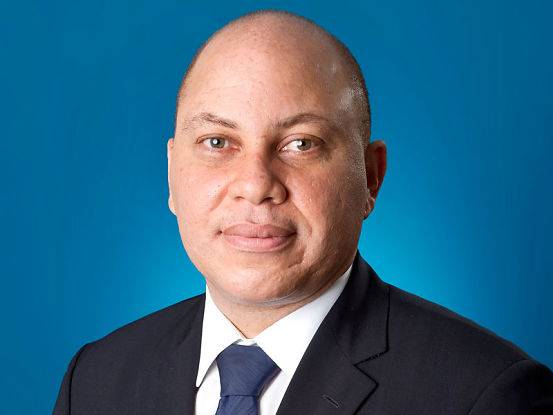
Jeffrey Hall Is Set To Be One Of The Most Powerful Men In Corporate Jamaica And The Caribbean. So, Who Is He?

Trending
-

 Businessuite Women2 weeks ago
Businessuite Women2 weeks agoData Mavericks of the Caribbean: Raquel Seville & Dataffluent’s Visionary Rise
-

 Businessuite News243 weeks ago
Businessuite News243 weeks agoIndia’s 10-Minute Delivery Boom: A Blueprint for Disruption—and a Wake-Up Call for Caribbean Courier Companies
-

 Businessuite News243 weeks ago
Businessuite News243 weeks agoBusinessuite Special Report P4 | Homegrown Disruption: InterMetroONE & Walkbout.com Position Jamaica’s Answer to Uber–Airbnb
-

 Businessuite News24 International3 weeks ago
Businessuite News24 International3 weeks agoIndia’s 10-Minute Delivery Boom: Reshaping Retail, Logistics, and Urban Spaces
-

 Corporate Feature3 weeks ago
Corporate Feature3 weeks agoNot Just Vanity Metrics: A Digital Leader Focused on What Matters
-

 Businessuite Markets3 weeks ago
Businessuite Markets3 weeks agoEduFocal Faces Equity Deficit of $135M Amid $314M in Accumulated Losses
-

 Business Insights2 weeks ago
Business Insights2 weeks agoBusinessuite Cover Story: Too Much Power? Governance Risks Rise as Tyrone Wilson Consolidates Leadership at Kintyre and Visual Vibe
-

 Businessuite Women4 weeks ago
Businessuite Women4 weeks agoDorothea Gordon-Smith Marks 50 Years of Quiet Power in Waste Management


